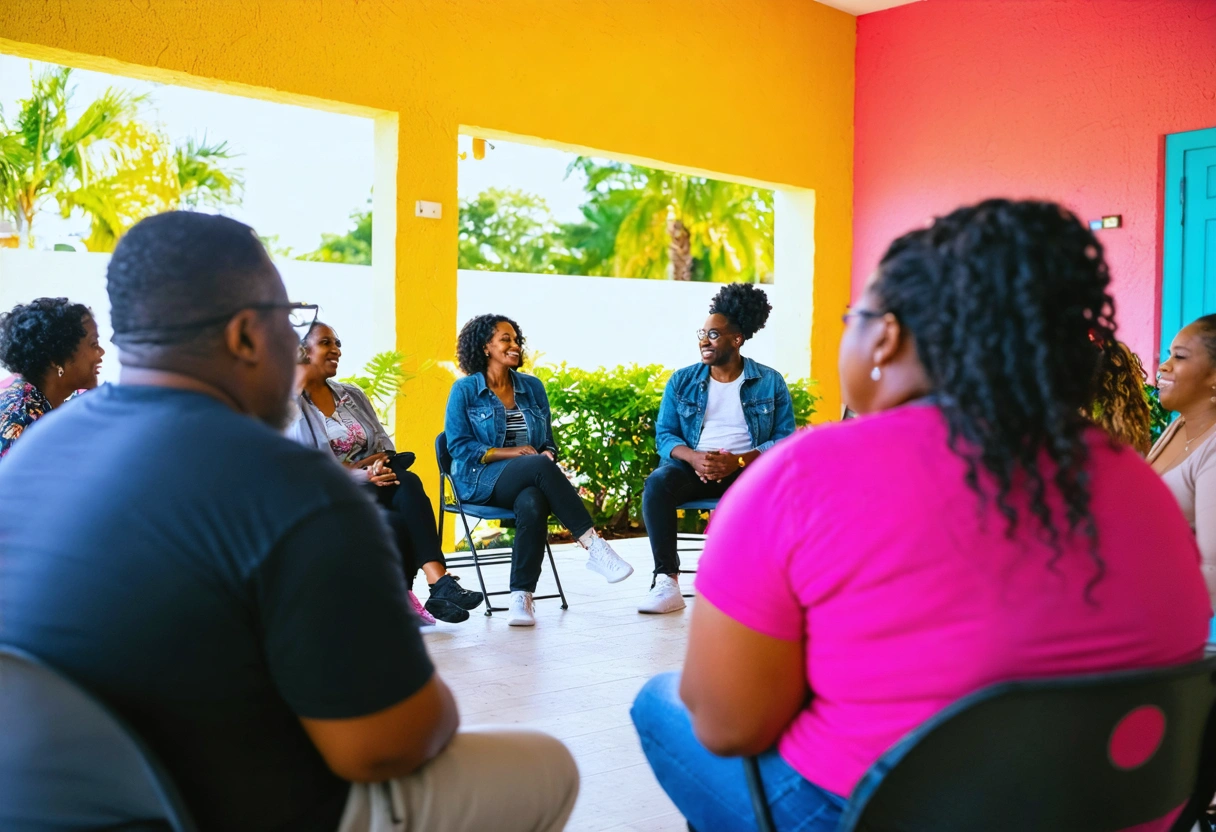The Power of Positive Communication in Conflict Resolution: A Guide for Floridians
Conflict is an inevitable part of life, whether in personal relationships, workplaces, or community settings. For Floridians, who thrive in a culturally diverse and dynamic state, the ability to resolve conflicts effectively is especially vital. Positive communication stands out as a transformative tool in navigating disagreements, fostering understanding, and building stronger connections. This comprehensive guide unpacks the importance of positive communication in conflict resolution, with practical tips and insights tailored for Florida’s unique social landscape.
From the bustling streets of Miami to the tranquil neighborhoods of Tallahassee, Floridians encounter a myriad of perspectives and backgrounds. Embracing positive communication is not just about avoiding arguments; it’s about creating a climate where everyone feels heard and respected. This approach can de-escalate tense situations, prevent misunderstandings, and encourage collaborative problem-solving—skills that are indispensable in today’s interconnected world.
Understanding Positive Communication
Positive communication is more than just polite conversation. It involves expressing thoughts, feelings, and needs in a manner that is respectful, clear, and constructive. Unlike negative communication, which can lead to defensiveness and escalation, positive communication seeks to build bridges and promote understanding. It is rooted in empathy, active listening, and a genuine desire to connect with others.
In the context of conflict resolution, positive communication empowers individuals to express their concerns without resorting to blame or criticism. This paves the way for solutions that address underlying issues rather than just superficial symptoms. According to the American Psychological Association’s insights on communication, effective dialogue is crucial for emotional well-being and relationship satisfaction.
Why Positive Communication Matters in Florida
Florida’s vibrant tapestry of cultures, languages, and traditions presents unique challenges and opportunities in conflict management. In such a diverse environment, misunderstandings can easily arise due to differences in communication styles, values, and expectations. Positive communication acts as a unifying force, enabling Floridians to bridge cultural gaps and find common ground.
Whether you live in a multicultural urban center like Orlando or a close-knit coastal town, embracing positive communication can help you navigate disputes with neighbors, colleagues, or family members. By prioritizing respect and inclusivity, you contribute to a more harmonious community—one that celebrates diversity rather than letting it become a source of division.
Core Principles of Positive Communication in Conflict Resolution

To harness the power of positive communication, it’s essential to understand its foundational principles. These guiding tenets can transform the way conflicts are approached and resolved, fostering a more collaborative and supportive environment for all involved.
1. Active Listening
Active listening is the cornerstone of positive communication. It involves fully concentrating on what the other person is saying, rather than simply waiting for your turn to speak. By paying close attention, asking clarifying questions, and reflecting back what you’ve heard, you demonstrate genuine interest and respect for the other person’s perspective.
This approach is particularly impactful in emotionally charged situations. For example, if a disagreement arises between neighbors over property boundaries, active listening can help both parties feel validated and understood, paving the way for a mutually satisfactory solution. The Mind Tools guide on active listening offers practical techniques for enhancing your listening skills in everyday interactions.
2. Empathy and Validation
Empathy involves putting yourself in the other person’s shoes and acknowledging their feelings, even if you don’t agree with their viewpoint. Validation goes a step further by affirming that their emotions and experiences are legitimate. Together, these practices foster trust and openness, making it easier to resolve conflicts constructively.
In Florida’s multicultural communities, empathy can bridge cultural divides and dispel stereotypes. For instance, understanding a coworker’s background or personal challenges can shed light on their behavior and reduce the likelihood of misunderstandings. By validating emotions, you demonstrate that you value the relationship more than simply “winning” the argument.
3. Clarity and Assertiveness
Clear and assertive communication is essential for expressing your needs without being aggressive or passive. Assertiveness means stating your thoughts and feelings honestly while respecting the rights of others. This approach minimizes confusion and ensures that everyone’s needs are considered in the resolution process.

For example, instead of saying, “You never listen to me,” an assertive statement would be, “I feel unheard when I share my ideas, and I’d appreciate it if we could talk through them together.” Such clarity reduces defensiveness and invites collaboration, which is particularly important in diverse work environments.
Practical Strategies for Practicing Positive Communication
Mastering positive communication requires practice and intentionality. The following strategies can help Floridians integrate these principles into their daily lives, making conflict resolution more effective and less stressful.
Use “I” Statements
One of the simplest yet most powerful tools in positive communication is the use of “I” statements. These statements focus on your own feelings and experiences rather than placing blame on others. For example, instead of saying, “You make me angry,” try, “I feel upset when this happens.” This subtle shift reduces the likelihood of defensiveness and encourages the other person to listen openly.
“I” statements are especially useful in workplace conflicts, where maintaining professionalism is crucial. They allow you to assert your needs without alienating colleagues or escalating tensions.
Maintain Open Body Language
Nonverbal cues often speak louder than words. Open body language—such as maintaining eye contact, uncrossing your arms, and facing the person you’re speaking with—signals that you are approachable and receptive. This can help diffuse tension and encourage a more positive exchange of ideas.
In the diverse social settings of Florida, being mindful of body language is particularly important. Different cultures interpret gestures and expressions in various ways, so maintaining openness and friendliness can help bridge cultural gaps and facilitate smoother communication.
Manage Emotions Effectively

Conflicts can trigger strong emotions, but allowing anger or frustration to dictate your words rarely leads to positive outcomes. Take a moment to breathe, collect your thoughts, and approach the conversation with a calm and measured demeanor. This not only models emotional intelligence but also sets the tone for a more constructive dialogue.
If emotions are running high, it may be helpful to take a break and revisit the conversation later. Giving yourself and others time to cool off can prevent regrettable outbursts and ensure that the discussion remains focused on finding solutions.
Seek Common Ground
Focusing on shared goals and interests can help shift the conversation from confrontation to collaboration. Instead of dwelling on differences, look for areas of agreement and build from there. For instance, if you’re involved in a community dispute over local development, emphasize your mutual desire for a safe and vibrant neighborhood. This collaborative mindset can transform adversaries into partners working towards a common cause.
The Mediate.com article on communication in mediation discusses how finding common ground facilitates resolution in even the most challenging conflicts.
Common Pitfalls to Avoid in Conflict Communication
While positive communication is a powerful tool, there are common pitfalls that can undermine its effectiveness. Being aware of these traps can help you steer clear of unnecessary conflict and maintain productive relationships.
Blaming and Criticizing
Assigning fault or criticizing others rarely leads to resolution. Instead, it often puts the other person on the defensive and escalates the conflict. Focus on describing the situation and your feelings, rather than pointing fingers. This approach encourages the other party to engage in problem-solving rather than self-defense.

Interrupting or Talking Over Others
Interruptions signal that you are not truly listening or valuing the other person’s perspective. Practice patience and allow others to finish speaking before responding. This not only shows respect but also provides you with a fuller understanding of their concerns.
Ignoring Cultural Differences
Florida’s population is a mosaic of cultures, each with its own communication styles and norms. Failing to recognize these differences can lead to misunderstandings and unintended offense. Take the time to learn about and appreciate the diverse backgrounds of those around you, and be open to adjusting your communication style as needed.
The Role of Positive Communication in Preventing Escalation
One of the greatest benefits of positive communication is its ability to prevent conflicts from escalating into more serious disputes. By addressing issues early and constructively, you can resolve misunderstandings before they become entrenched and difficult to manage.
For instance, in a homeowners’ association meeting in a Florida suburb, a disagreement over parking regulations could quickly spiral if members resort to accusatory language or hostile gestures. However, by employing positive communication—listening actively, validating concerns, and seeking common ground—the group can reach a consensus that respects everyone’s interests.
According to the Crisis Prevention Institute’s guide to communication skills in conflict, early intervention and a positive approach are key to managing disputes effectively and maintaining healthy relationships.
Positive Communication in Florida’s Multicultural Context

Florida’s multicultural communities present unique opportunities for learning and growth. Positive communication not only helps resolve conflicts but also enriches our understanding of others. By embracing diverse perspectives and valuing inclusion, Floridians can build communities that are resilient, welcoming, and vibrant.
In practice, this means being mindful of language barriers, cultural norms, and differing values. For example, some cultures prioritize indirect communication, while others value directness. Taking the time to understand these differences can prevent misunderstandings and ensure that everyone feels respected and included.
The Pew Research Center’s analysis of Florida’s diversity highlights the importance of cultural sensitivity and adaptability in communication. By cultivating these skills, Floridians can turn potential sources of conflict into opportunities for connection and collaboration.
Building a Culture of Positive Communication: Tips for Floridian Communities
Creating a culture of positive communication requires collective effort. Whether you are a community leader, educator, employer, or neighbor, you can play a role in fostering environments where respectful dialogue is the norm. Here are some practical tips for building such a culture in Florida’s diverse settings:
- Model Positive Communication: Set an example by practicing active listening, empathy, and assertiveness in your interactions. Others are more likely to follow suit when they see these behaviors in action.
- Provide Training and Resources: Offer workshops or resources on effective communication and conflict resolution skills. Many local organizations and educational institutions can assist in developing these programs.
- Encourage Open Dialogue: Create safe spaces where community members can voice their concerns without fear of judgment or retaliation. Regular forums, town hall meetings, and feedback sessions can promote transparency and trust.
- Celebrate Diversity: Recognize and honor the unique backgrounds and contributions of all community members. Cultural celebrations, language classes, and diversity training can enhance mutual understanding and appreciation.
Embracing Positive Communication for a Stronger Florida
The power of positive communication in conflict resolution cannot be overstated. For Floridians, mastering these skills is a pathway to more harmonious relationships, resilient communities, and a richer appreciation of the state’s extraordinary diversity. By listening actively, expressing empathy, communicating assertively, and avoiding common pitfalls, individuals and groups can turn conflicts into opportunities for growth and unity.
As Florida continues to evolve and welcome new residents from all walks of life, the ability to navigate conflict with positivity and respect will only become more important. By investing in these essential skills and fostering a culture of openness and inclusion, Floridians can ensure a brighter, more connected future for generations to come. For further reading on effective communication and conflict management, the HelpGuide’s conflict resolution skills article offers a wealth of practical advice and real-world examples.
Need help with The Power of Positive Communication in Conflict Resolution: A Guide for Floridians?

